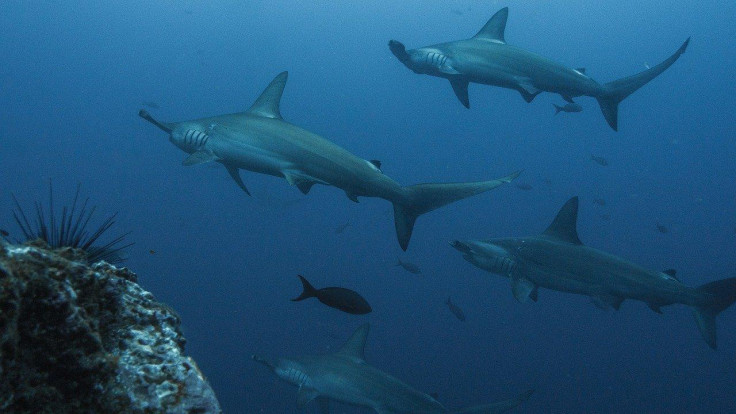Researchers Spot 'Southernmost' Aggregation Of Rare Hammerhead Sharks In Australia

Researchers have spotted the "southernmost" aggregation of critically endangered hammerhead sharks in Australian waters. This could have implications for the rare species' conservation.
Scalloped hammerhead sharks tend to exist in tropical to subtropical waters, the authors of a new study, published in Austral Ecology, noted. In Australia, they are "rarely" spotted south of Jurien Bay.
But thanks to drone footage from the summers of 2019 and 2020, researchers were able to observe an aggregation of scalloped hammerhead sharks within the Shoalwater Islands Marine Park, which is about 240 kilometers south of Jurien Bay. They were sighted in the months of January and February and are said to likely be a group of sexually immature juveniles, the University of Western Australia (UWA) noted in a news release.
"We report the southernmost recurrent aggregation of scalloped hammerheads in Australia, potentially extending the known persistent distribution of the species in the south-eastern Indian Ocean," the researchers wrote.
It's possible that the sharks have been moving "poleward" because of the warming waters, Naima Andrea López, a Ph.D. candidate at UWA's Marine Future's Lab and the study's lead author, said in the university news release.
Conservation of the critically endangered species
The concern now is that the species, which is considered to be critically endangered by the International Union for the Conservation of Nature, may be subjected to fishing pressures.
Scalloped hammerheads tend to be commercially fished and also sought after by game anglers, according to Florida Museum. Since they tend to aggregate in large groups, they are also captured in large numbers. In some areas, this has even caused populations to completely die off.
Scalloped hammerheads are among the "most threatened" vertebrates globally, the researchers said, adding that the species has seen a decline of over 80% in the past seven decades.
The researchers went on to share that in the case of the scalloped hammerheads they spotted, the sharks' presence in the area "has conservation implications" for the species. So far, the current catch of scalloped hammerheads is unknown. They further noted an increase in recreational trophy fishing for large sharks in the region.
"The implications of an increasing regional abundance and potential proportional increase in recreational fishing mortality rates need to be carefully considered when reviewing the species' future listing status," the researchers wrote.
Currently, the conservation status of scalloped hammerhead sharks under Australia's Environmental Protection and Biodiversity Conservation Act is under review. Given the new information, the researchers caution against relying on "historical catch composition data" as it may be invalid.
"Until the contemporary composition of commercial and recreational hammerhead catches can be verified, both the State and Federal governments should strengthen protection of the species, especially at their aggregation sites," Prof. Jessica Meeuwig of UWA, study co-author, said in the university news release.
According to the researchers, authorities should have a "precautionary approach" in the review of the species' status until the extent of its southerly distribution has been established.

Photo: Pixabay




















